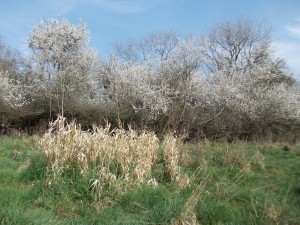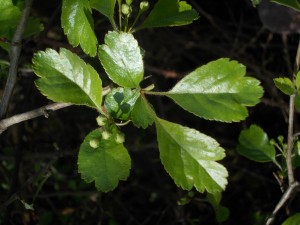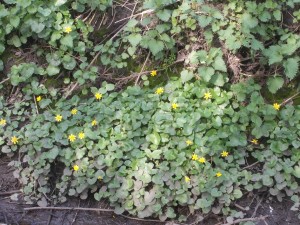
On this lovely spring day I drove around the backstreets of Ickenham until I found my way to Austin’s Lane (there’s The Old Fox pub marking its start) and so to Ickenham Marsh nature reserve (London Wildlife Trust). It’s tucked away behind Northolt airfield: the second world war Spitfires have been replaced by transport planes and executive jets, but the result has been to keep development at bay. The marsh is bordered with great drifts of blackthorn, the soft white blossom lovely in the broad hedges. Chiffchaffs were singing all over, and a mistle thrush rasped out its harsh flight call. Even the dunnocks looked splendid, their grey and brown plumage catching the sun as they chased low around the bushes. The breeze brought the occasional whiff of aviation fuel, but still there were some small patches of common orange lichen, Xanthoria parietina, and the grey lichen of bare twigs, Parmelia.

A complete surprise was the Midland Hawthorn by the Hillingdon Trail which crosses the reserve. The bush is the same size and shape as the common Hawthorn, but the leaves are only very slightly notched rather than deeply divided, and the flowers have two styles, not one (easy to remember as the common Hawthorn is C. monogyna ‘one-female’). An uncommon or perhaps just an easily-overlooked plant, something old and special on the edge of London.

Also crossing the reserve, roughly northeast-southwest, is the Yeading Brook. I was just taking a photo of the first buttercups of spring, the lesser celandine, which likes wet muddy places, on the steep bank of the brook, when a kingfisher shot down the middle of the little stream, blue and turquoise. I turned to take my photo, and the kingfisher, or its mate, raced back past me again.
